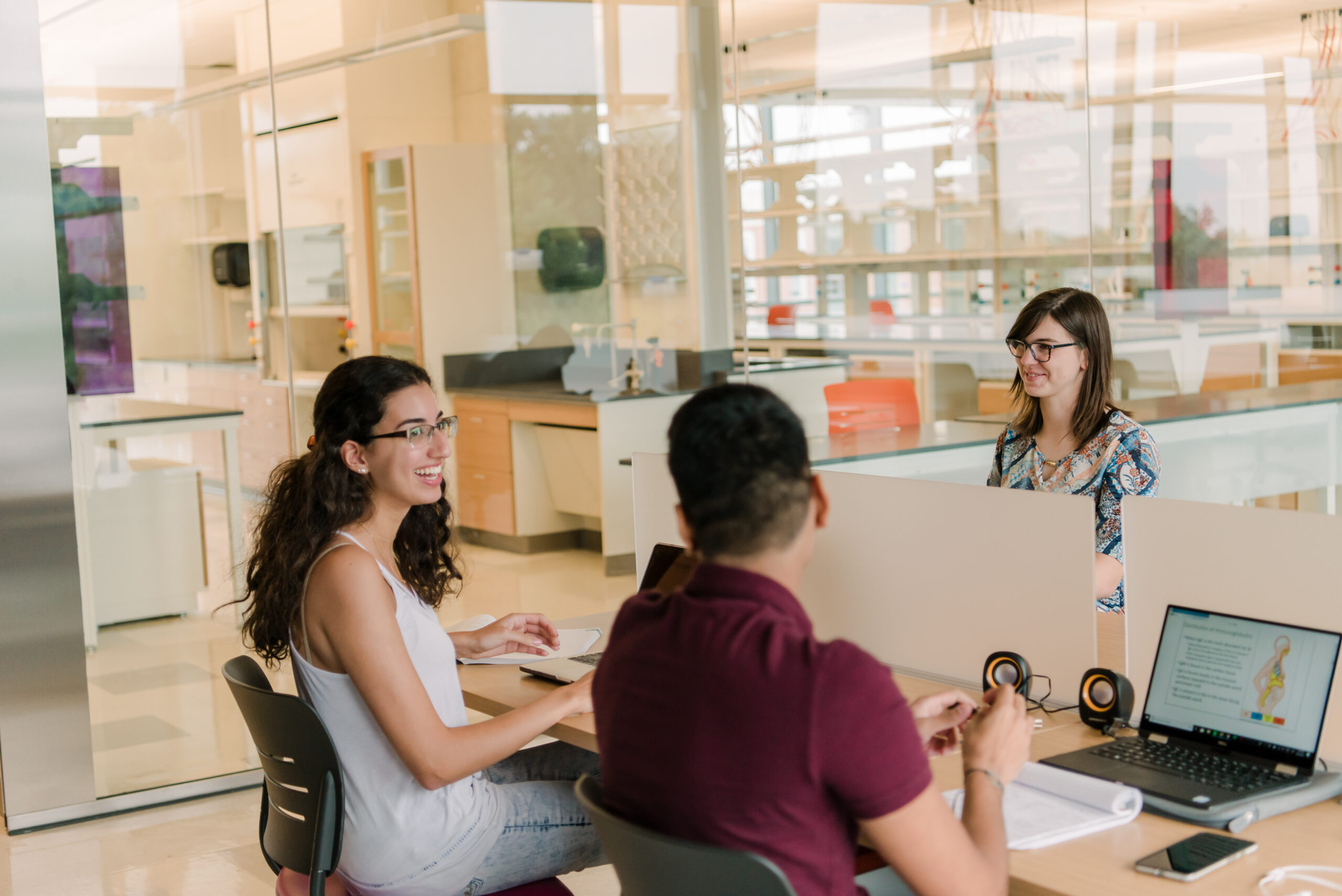This fall, hundreds of Retrievers will set foot in UMBC’s new Interdisciplinary Life Sciences Building for the first time. They may be inspired by the vibrant art installation, find a quiet nook to study, or work together in research labs with floor-to-ceiling windows overlooking pocket gardens and curving pathways. The new facility offers features that set it apart as a space for learning, and set up students and faculty for transformative moments of discovery.
“New things will brew”
Each research floor in the ILSB is connected along its entire length and bounded by glass on all sides. Inside the labs, benches are configurable so that instrumentation can go in and out as needed. Neon-colored glass surfaces double as marker boards for quick sketches of lab protocols, equations, or encouraging doodles. Just outside the lab are spaces, overlooking an airy atrium, where graduate students can write and undergraduates can meet with mentors.
It’s a research environment that looks toward the future. These shared, open spaces are designed to help anyone who enters sense that they have a role to play in addressing big challenges, discovering more about the world, and developing the next generation of scientists.
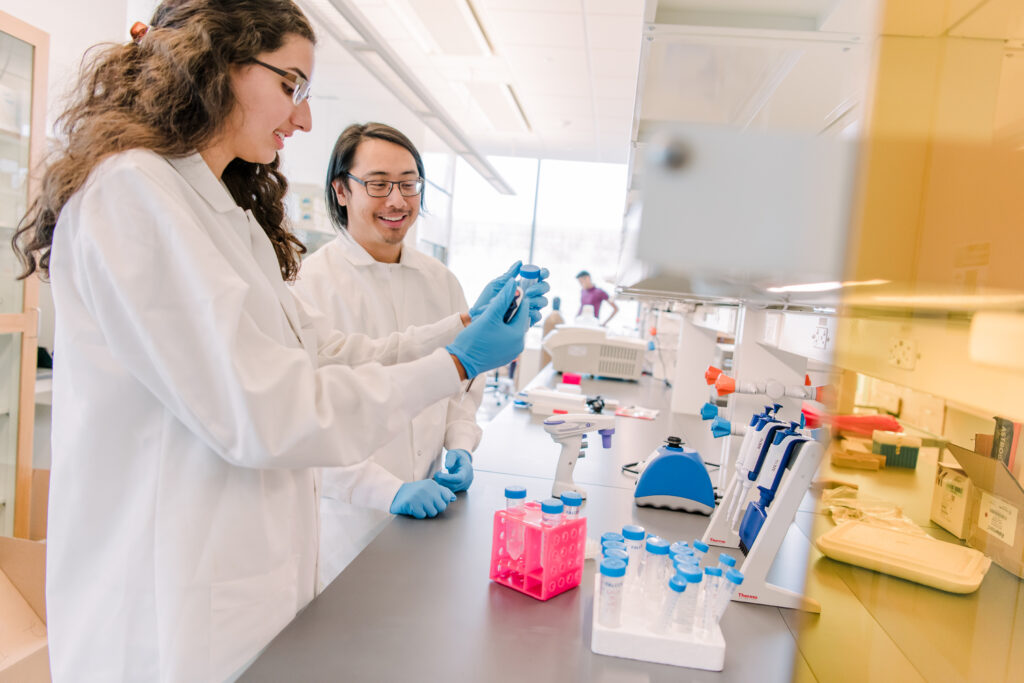
“The ILSB provides an unprecedented opportunity to have researchers who are intellectually next to each other also be physically next to each other,” shares Greg Szeto, assistant professor of chemical, biochemical, and environmental engineering (CBEE). “When you share a kitchenette with a biologist, a chemist, an engineer and somebody from public policy, it’s inevitable that new things will brew.”
Szeto is part of the new Translational Center for Age-Related Disease and Disparities (TCARD2), an initiative made possible by the ILSB. The initiative is led by Chuck Bieberich, professor of biological sciences, and also includes faculty from CBEE and psychology. Bieberich’s lab focuses on cancer biology, especially prostate cancer, while Szeto works on cancer therapies that leverage the immune system. “When we bring our two approaches together, hopefully it will lead to new research, new papers, new grants,” and new cancer treatments, Szeto says.

On top of the collaborative advantage, the ILSB offers all the equipment labs need in one place. Szeto’s students were already collaborating with biologists, but that used to mean carrying samples to instruments in other buildings. Not anymore. “Now everything is going to be in the ILSB,” Szeto says. “Being able to centralize the operation both intellectually and logistically is so critical.”
Bringing the outside in
Faculty in the new Interdisciplinary Consortium for Applied Research in Ecology and Evolution (ICARE2) are also taking up residence in the ILSB. Tamra Mendelson, professor of biological sciences, and Chris Swan, professor of geography and environmental systems (GES) co-lead the initiative. It also includes faculty in CBEE and marine biotechnology.
“The collaboration is designed to bring together evolutionary biologists, ecologists, conservationists, social scientists, and engineers,” says Swan. “We want to build a powerful network of people to collaborate on training graduate students, solving environmental problems relevant to Baltimore, and building out UMBC’s focus on ecology.” The ILSB will offer ICARE2 researchers the opportunity to work in a shared space for the first time.
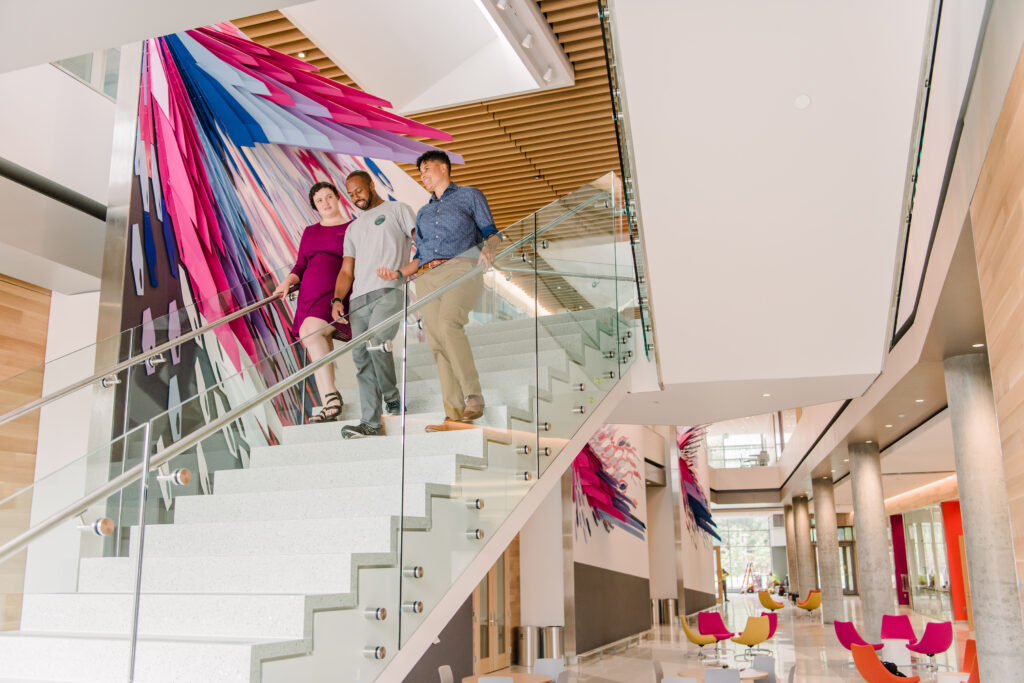
A new, state-of-the-art environmental science lab in the ILSB will also open up the possibilities for these researchers. It’s a space “devoted to environmental work,” which often means, “It’s dirty!” Swan says. The lab will enable larger-scale controlled experiments that can be hard to manage in the field and that would be incompatible with a lab focused on molecular work, where the slightest bit of stray DNA could ruin an experiment.
“A total game-changer”
Chris Hawn, assistant professor of GES, is excited to move to the ILSB because of the doors it will open for their environmental research. Hawn runs chemical analyses on spiderwebs to measure local air quality. They are collaborating with an advocacy group for houseless people that will train them to collect webs in spaces where they are living to send to Hawn for analysis. The goal is that they can use the findings to advocate locally for their health and make the best possible choices about where to stay.
Hawn also studies how pollutants in waterways are passed through the food chain from small aquatic insects, to spiders, to birds.
The ILSB “is a total game-changer for me,” Hawn says. With the instrumentation available at the ILSB, “There are protocols where I can get ‘level unlocked.’ It just opens things up for me and my students.”
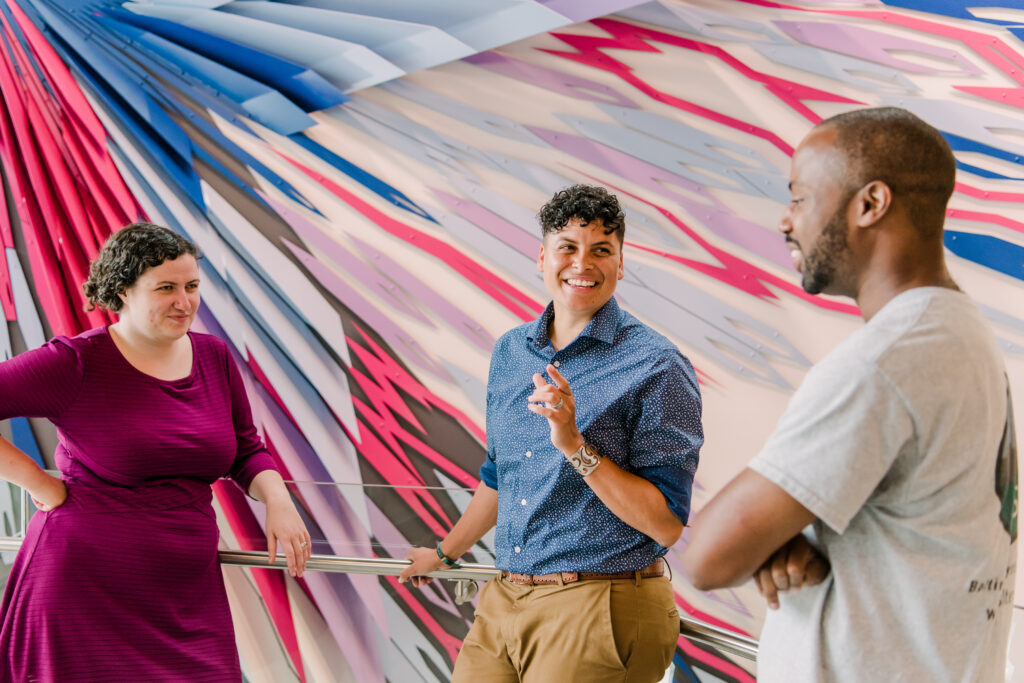
Hawn is the first researcher assigned to their floor of the new building. They note, “I’m excited to make the space my own, but also excited that it will be a shared space very soon. It will be interesting to see how we can work together.”
Even if they aren’t working together directly, having other researchers nearby is a good thing, Hawn adds. “Working simultaneously and having people around you is important, especially for graduate students who are spending a lot of their time in the lab.”
Coming to life
Sarah Leupen, senior lecturer in biological sciences, has been looking forward to teaching in the ILSB—and not just because it’s a new space, but because it’s a new kind of space. Even the building’s largest learning spaces are designed to help students connect with each other and the material in an engaged, intimate, collaborative way.
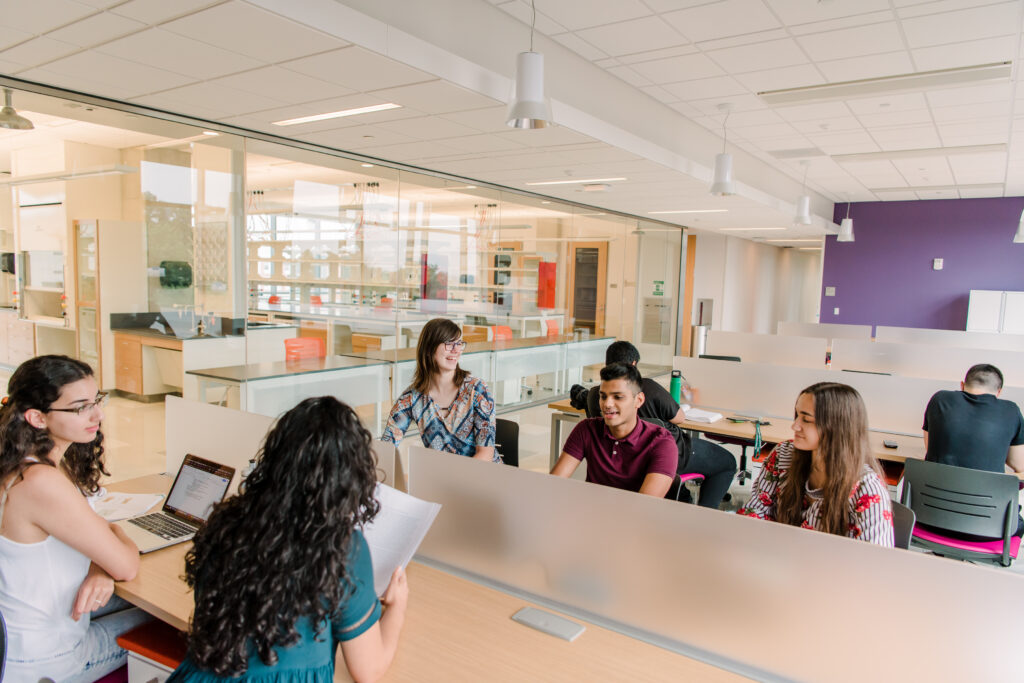
One of Leupen’s favorite rooms is filled with small round tables that seat six students. Screens and whiteboards appear all around the room and there is plenty of open space. “It’s this kind of flipped classroom that makes possible truly active learning, the kind of teaching that is most well-supported by research.”
Bill LaCourse, dean of the College of Natural and Mathematical Sciences, which administers the building, is thrilled to see it come to life. “For me, it’s been a decade of planning, design and construction to create this building that can serve the needs of our community in essential ways.”
“The process really epitomized the ethos of UMBC, involving the input and collaboration of so many people across the university,” he shares. “To see it evolve from a germ of an idea to the magnificent building we see today is a tribute to UMBC’s strength in the life sciences and commitment to student and faculty success.”
Banner image: Undergraduate researchers outside the TCARD2 lab. All photos by Marlayna Demond ’11 for UMBC.
Tags: Biology, CAHSS, CBEE, CNMS, COEIT, GES, interdisciplinary, Psychology, PublicPolicy, Research

